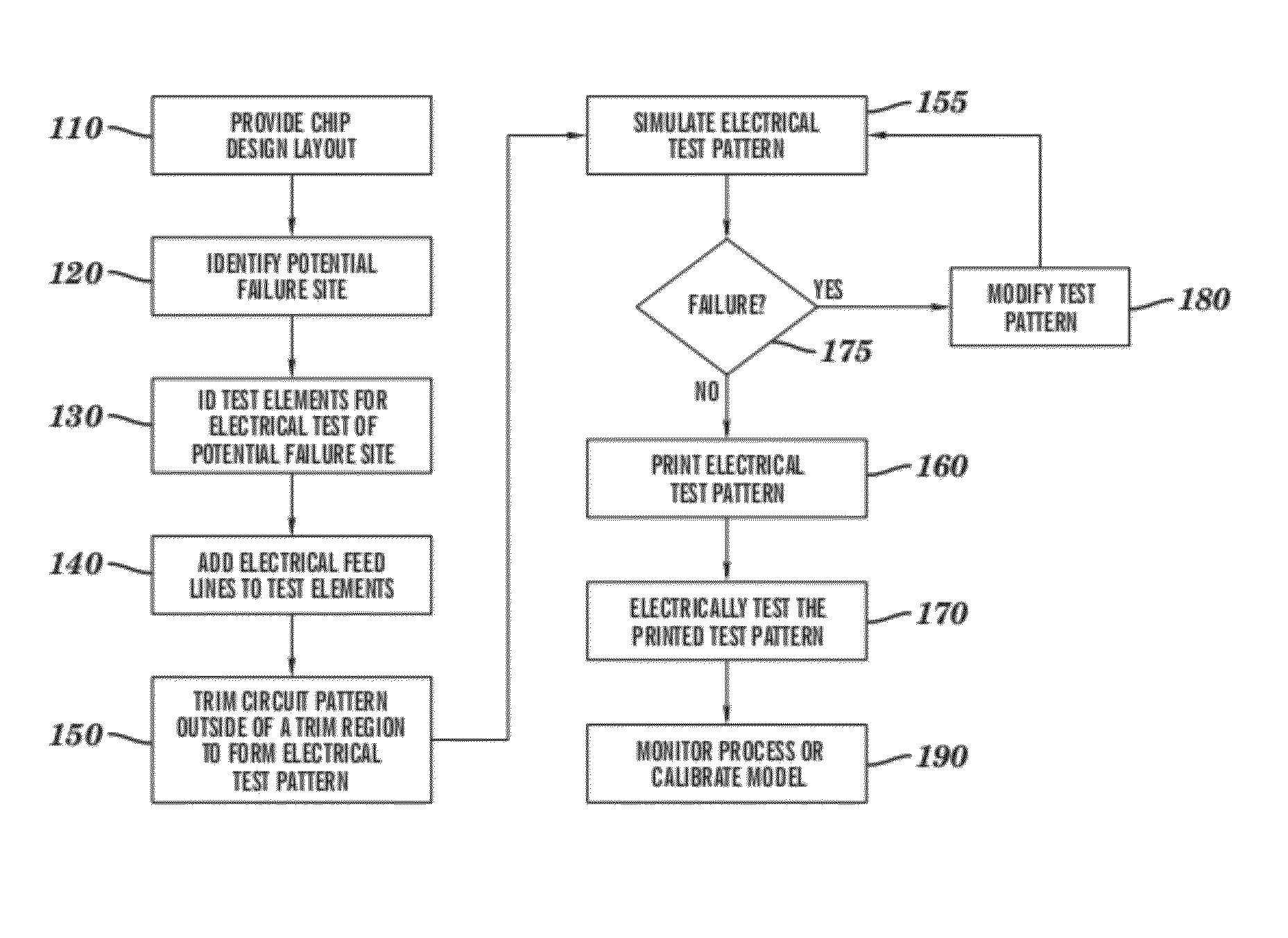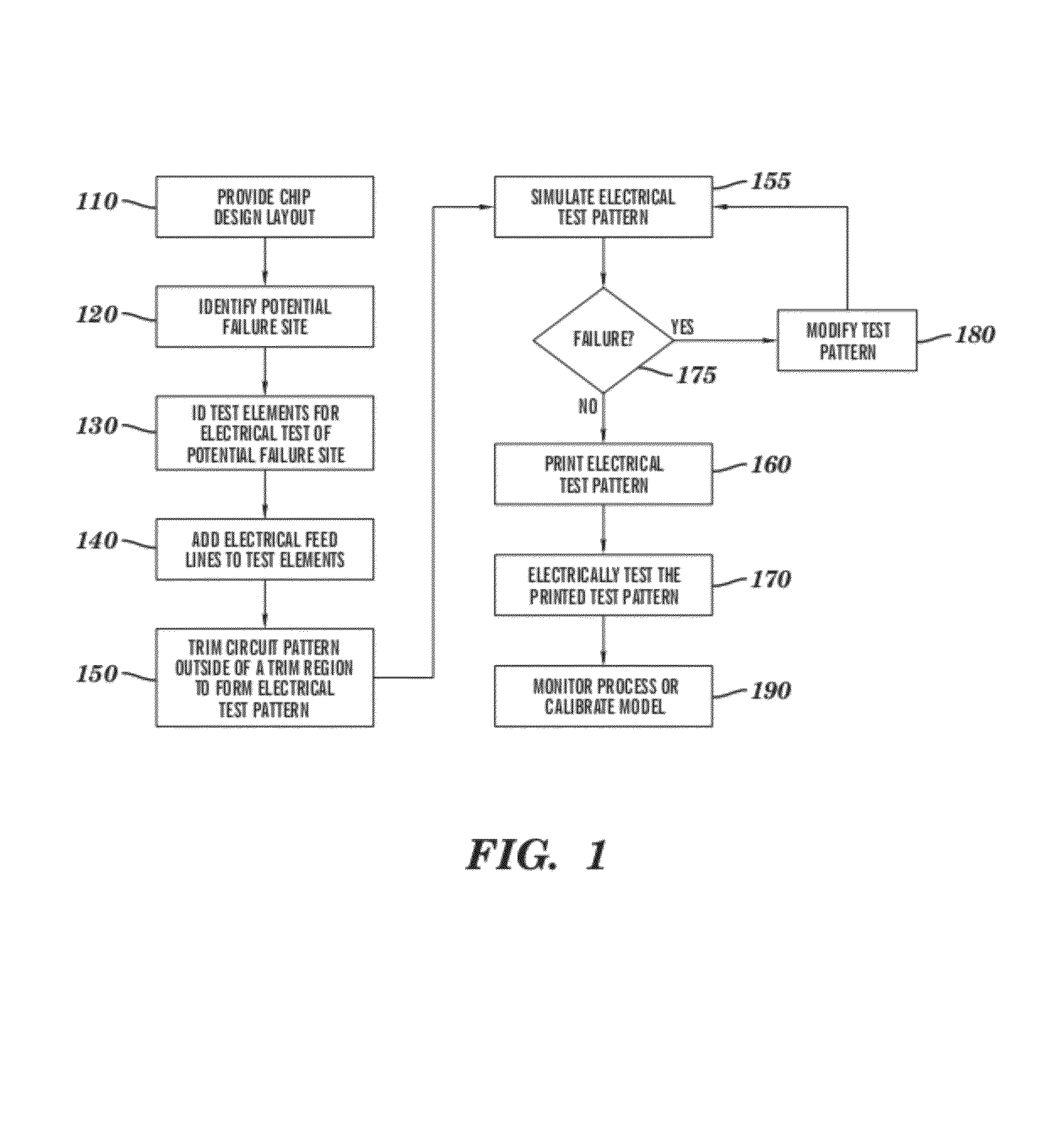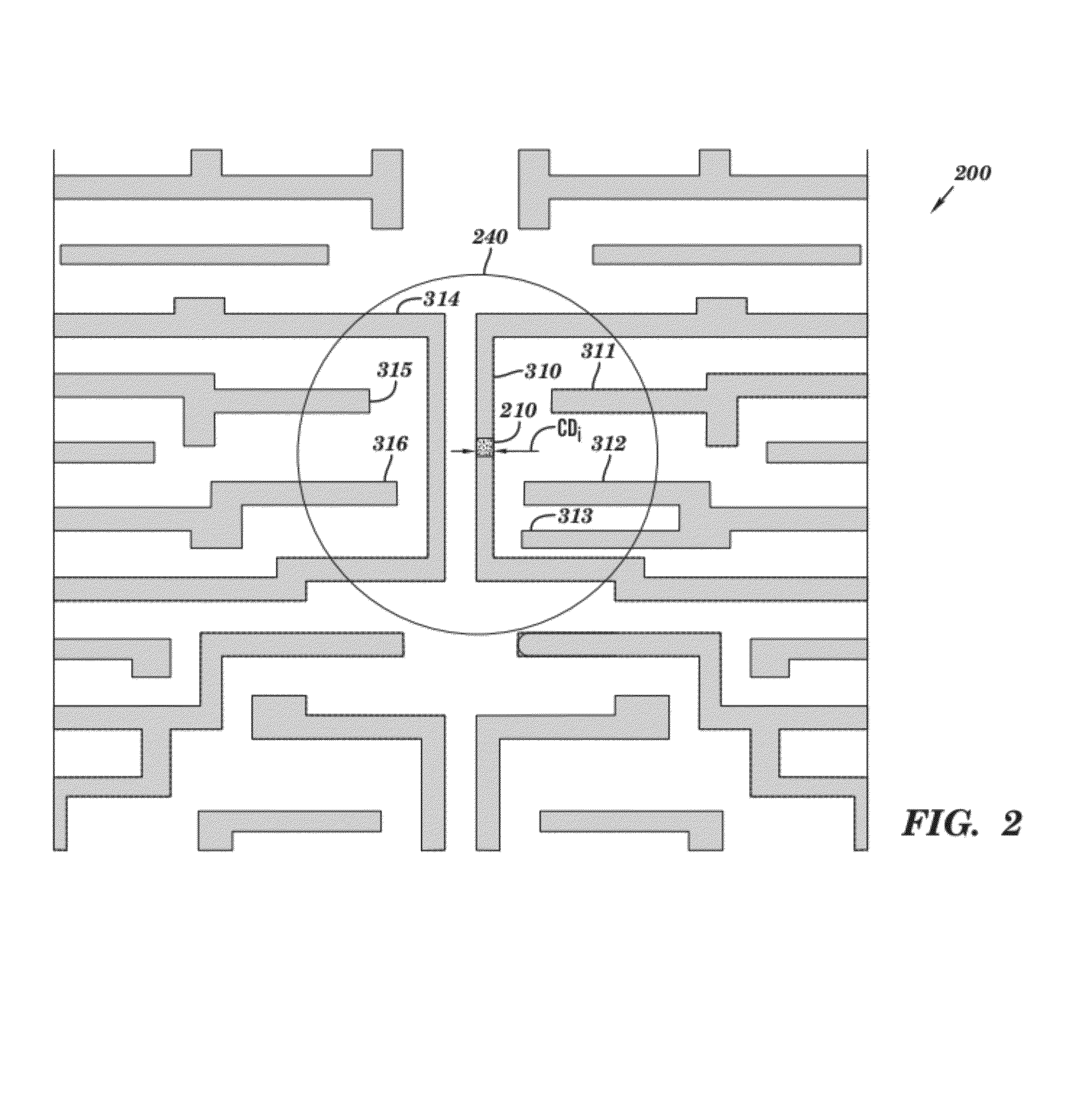Method for creating electrically testable patterns
a technology of electrical test patterns and electrical testing, applied in the direction of originals for photomechanical treatment, semiconductor/solid-state device testing/measurement, instruments, etc., can solve the problems of relatively simple current electrical test patterns and not fully representing the range of sensitive patterns
- Summary
- Abstract
- Description
- Claims
- Application Information
AI Technical Summary
Benefits of technology
Problems solved by technology
Method used
Image
Examples
Embodiment Construction
[0034]This invention presents a method for designing customized electrically testable patterns that more accurately represent the most sensitive structures arising from an actual chip design. Such customized electrical test patterns may be used to monitor any lithographic process used to transfer (or equivalently, print) a chip layout to a wafer. The term “lithographic process” as used and referred to herein, includes, without limitation, any pattern transfer process, such as forming a resist image, forming implants, performing a patterned etch, etc.
[0035]One embodiment of a method for designing an electrical test pattern, in accordance with the invention, is illustrated in FIG. 1. First, a chip layout of interest is provided (Block 110). The chip layout may be one of several layers of a chip design, containing a layout of polygons that represent critical features of the chip that are to be printed. Next, potential failure sites, or critical sites, are identified in the chip layout,...
PUM
 Login to View More
Login to View More Abstract
Description
Claims
Application Information
 Login to View More
Login to View More - R&D
- Intellectual Property
- Life Sciences
- Materials
- Tech Scout
- Unparalleled Data Quality
- Higher Quality Content
- 60% Fewer Hallucinations
Browse by: Latest US Patents, China's latest patents, Technical Efficacy Thesaurus, Application Domain, Technology Topic, Popular Technical Reports.
© 2025 PatSnap. All rights reserved.Legal|Privacy policy|Modern Slavery Act Transparency Statement|Sitemap|About US| Contact US: help@patsnap.com



